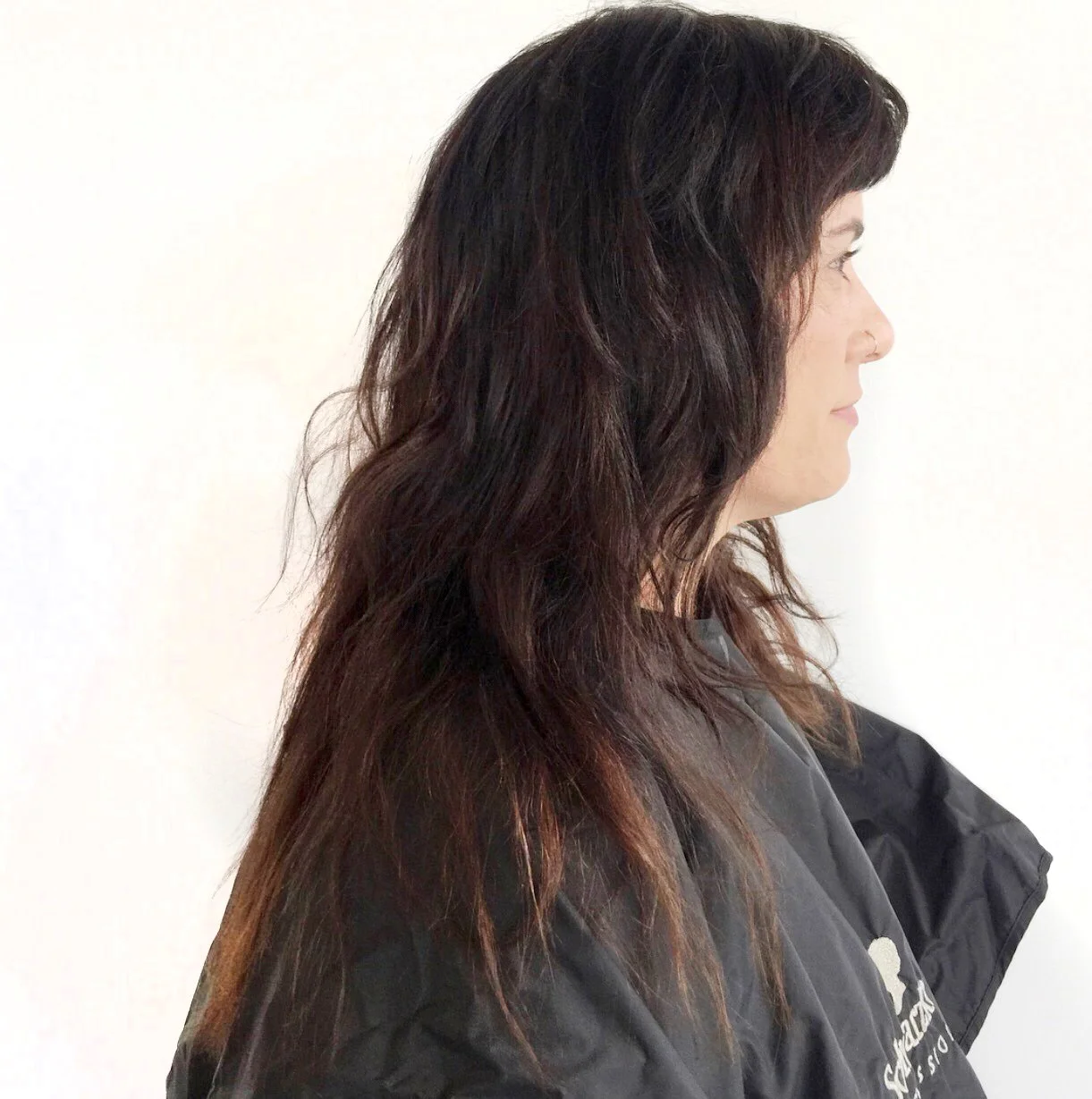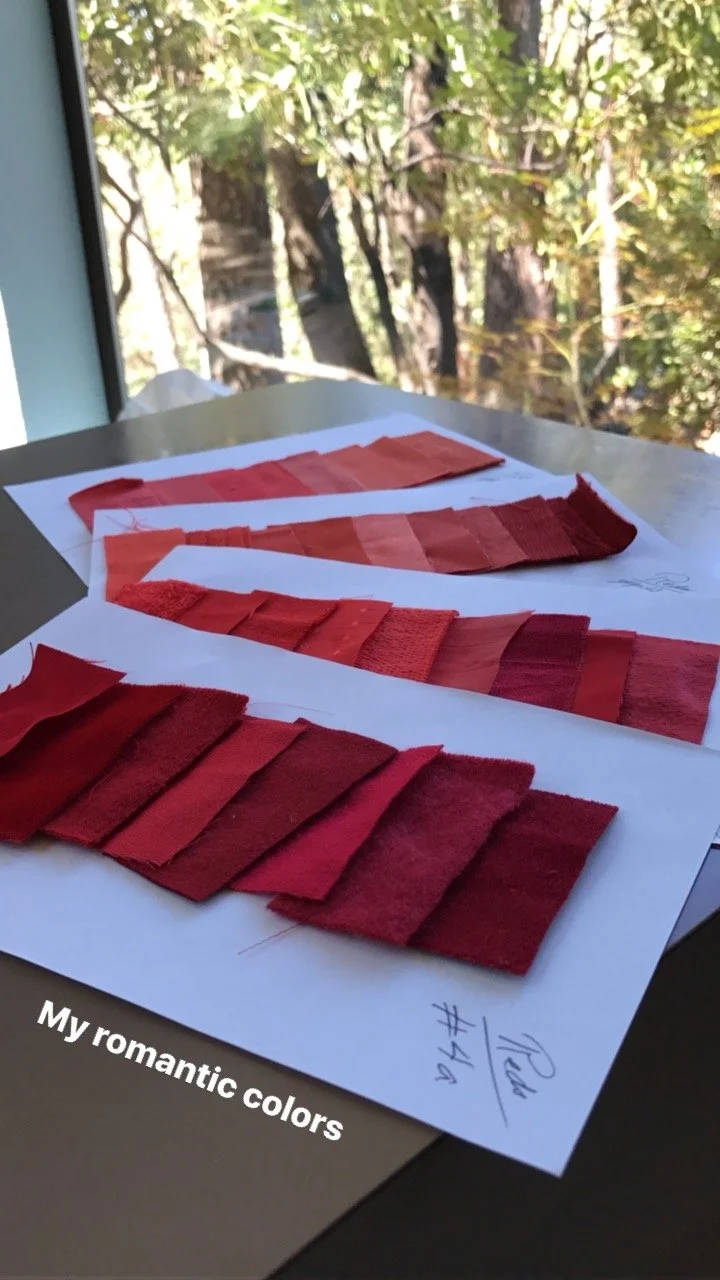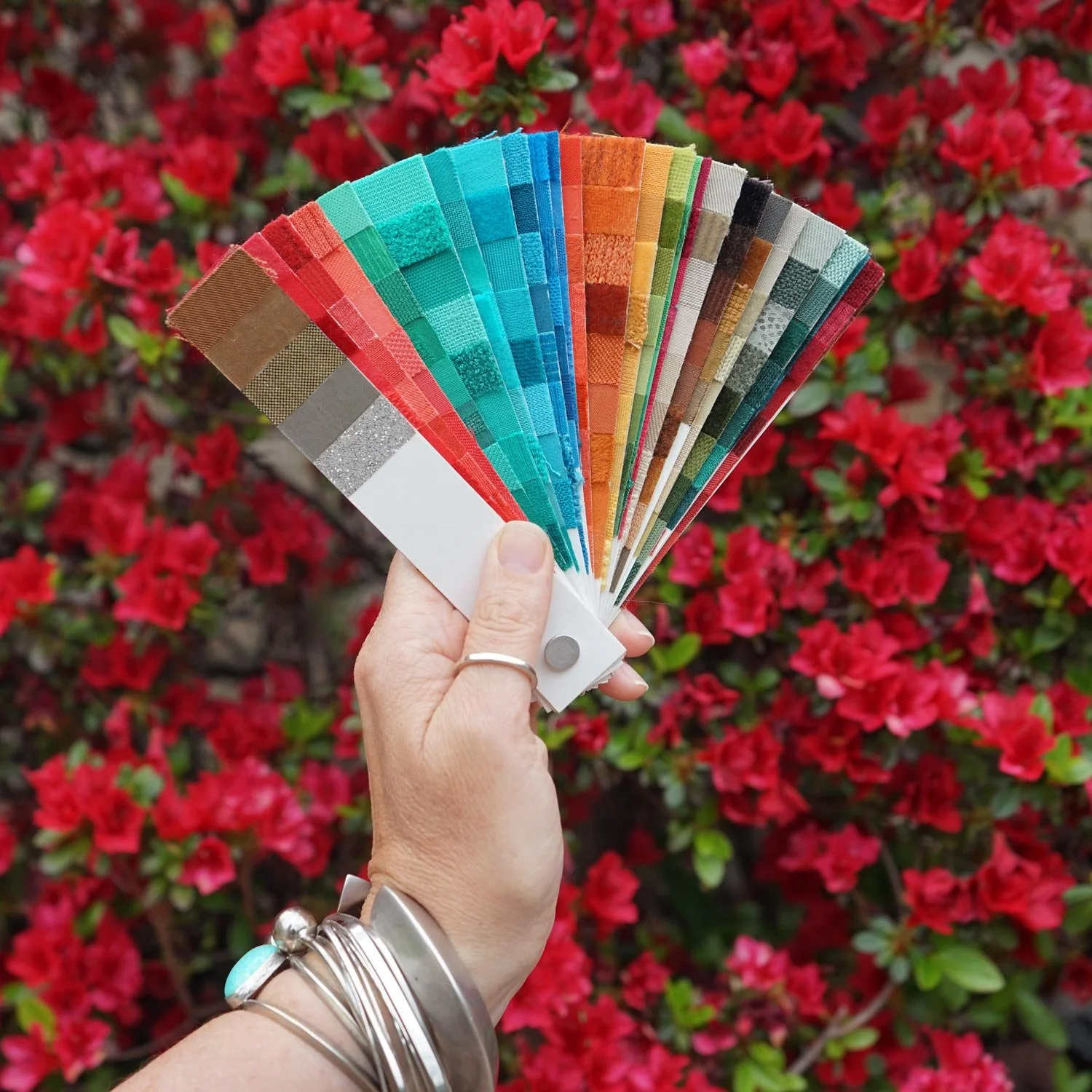How Color Analysis Revived My Style and Snapped Me Out of Burnout
I used to only wear black, gray, and brown tones. I had gotten into a funk, and my dark, drab wardrobe reflected my feelings.
Even my hair dye kept getting darker and darker.
I had given up on “style” and caring for myself. I was going through an emotionally traumatic time caring for my senior cat Biggie, whom I’d raised from birth until he passed at 22. He was having daily seizures and was my sole focus.
It was about this time that I started to notice big shifts in my hormones, like anxiety, weight gain, and adult cystic acne.
But what bothered me most was the lack of vibrancy in my skin and eyes.
I looked dull all over.
My hair was too dark, and my bangs were too short. Alex (my hubs) started to “lovingly” refer to them as monk bangs. Something needed to change, and it was more than just my clothes and hair.
I had never really given much intentional thought to the colors and clothes I wore. I shopped on the fly and grabbed pieces that caught my attention. Only to end up with a closet full of mismatched items that never saw the light of day.
so I decided it was time to embark on a transformational journey …
1. Hair: The first transformative step was my hair. I cut off over six inches and stripped all the dark out, which made a huge difference. I immediately looked ten years younger, and my spirits started to lift.
2. Health Coach/Trainer: The second step was to hire a health coach and trainer to help me get my health back on track. I learned a lot, but most importantly, I realized real transformation is a journey that never ends.
3. Color Analysis: This step really opened my eyes. I worked with Joanie, an expert in traditional color analysis, who analyzed my eyes, skin tone, and hair to determine which colors, patterns, and shapes worked best for me.
I learned that we all have dominant and secondary seasons. She then hand-picked all the color swatches you see below and created this handy color fan for shopping.
Dominant & Secondary Seasons
"The dominant season is a higher percentage of your life. Your secondary is part of you and in your color spectrum. You are drawn to your secondary and its look, but do not borrow lines, designs, or textures from it, or you will create a contradictory look of discord, not harmony. The dominant harmony dictates the best look. The secondary is represented in some colors, sometimes bone structure, and personality traits."
My Seasons:
Dominant: The Fall Harmony (80%)
”The colors remind us of the earth and nature's palette. They are radiant, warm, and vital. Fall people have well-defined features and a look of self-confidence and maturity (though they may feel insecure inside). They are organizers and leaders, down-to-earth and gregarious. The basic fall style lines are square or any part of it, as well as any angular geometric lines, points, and straight lines.”
Secondary: The Winter Harmony (20%)
”The colors are brilliant and contrasting, black and white, reminding us of a winter landscape. Winter people have a peacock quality, an aloof look, skin-like moonlight, and an expensive "sky is the limit" look. They exhibit surface stillness but are never dull or mundane. The basic winter-style lines are oval and "S" curves, stylized geometrics, or straight lines relieved by curves.”
“Color is nonverbal communication. It reflects the emotions, feelings, and strengths within us. Dress is a symbol of what we think of ourselves.” — Joanie
What I found most fascinating is that our seasons touch all areas of our lives.
It’s how I style my house, the scents and jewelry I wear, and even my brand colors!
No wonder Fall has always been my favorite season, and I love bold and geometric patterns, big chunky jewelry, jewel tones, and all things "witchy" and earthy!
Below, I’ve asked Joanie to explain a bit more about the advantages of color analysis and what it can do for you.
What do you do and where did you learn how to do it?
Joanie: First, I had to have a B.A. degree in Art and Education. I completed an intensive color theory course that includes the theory of color in light, color interaction, and the active-passive relationships of color (taught by Veronica Bialik, textile designer and color consultant in San Francisco. I received my technical color analysis training from Dilly Lehnhoff, director, and instructor of Color & Style, Moraga, CA. I am also certified in color psychology and color response.
What exactly is color analysis? How do you determine a person's season(s)? What factors is it based on?
Joanie: Everyone can wear red, blue, green, or brown, but which ones are yours?
Through a systematic and scientific method of observing your natural coloring (skin, eyes, and hair) a careful selection is chosen from over 4.000 color swatches.
If a color creates a change in your coloring, the artist does not give you that color. Some colors make you look yellow, green, or grey and consequently sabotage your appearance.
Your range includes only the colors that enhance your own coloring, establishing how light, dark, bright, or dull you should go in each color. You will also know your harmony and any percentages of the other harmonies.
Basic Harmony Groups
Colors fall into four basic groups depending on their hues, value, and intensities.
Spring Harmony (Lively) Colors are light, bright, and cheerful
Summer Harmony (Dynamic) Colors are blended, greyed, and soft
Fall Harmony (Dynamic) Colors are warm, mixed, and earthy tones
Winter Harmony (Striking) Colors are clear, brilliant, and contrasting
Each harmony has its own relating design lines, textures, and fabrics. Sometimes an item of clothing can be your color but not look right if it is in the wrong design and line or texture.
What is the difference between “elegants” “dramatics” “romantics” and “neutrals”?
Joanie: The difference between Elegants, Dramatics, and Romantics is the mood and the energy they represent.
Neutrals are background colors to which we should add color. They are for pants, skirts, jackets, vests, and accessories. They have no energy. If you wear all neutrals, your message is “I have nothing interesting to say or I don’t want to be noticed and I’m ordinary at what I do.” What if that’s not how you want to be perceived? Then, add color to your neutrals.
True colors on the color fan sticks represent the “on the mark” version of that color family. The next stick is moving onto the next color family, having some of it in the color.
What are the advantages of color analysis?
Save time, effort, and money while shopping by knowing your correct colors, lines, and designs.
Find your wardrobe expanding as each piece becomes color coordinated and interchangeable.
Discover new colors you never thought you could wear.
Learn what mood to project by the colors you wear, i.e., boldness, assurance, restfulness.
Use your color analysis to find out more about yourself. Research has shown a direct correlation between your coloring and physical characteristics and your inner essence (or personality).
Learn to apply your makeup in harmony.
So, if you’re feeling dull and in need of a refresh, you might seek out a color expert who is knowledgeable and trained. It really helped me break past the all-dark/all-the-time barrier.
Injecting color and the principles I’ve learned into my life has been transformative. I still love wearing dark tones (especially with silver hair), but I’ve learned to incorporate more color, and by doing so, I feel brighter within, more energetic, and happier.
Recently, I had my colors done again since going gray with Your Color Guru, and I was very impressed. If you’re curious about what colors and metals look best on your skin tone, you can get 10% off using this link.







